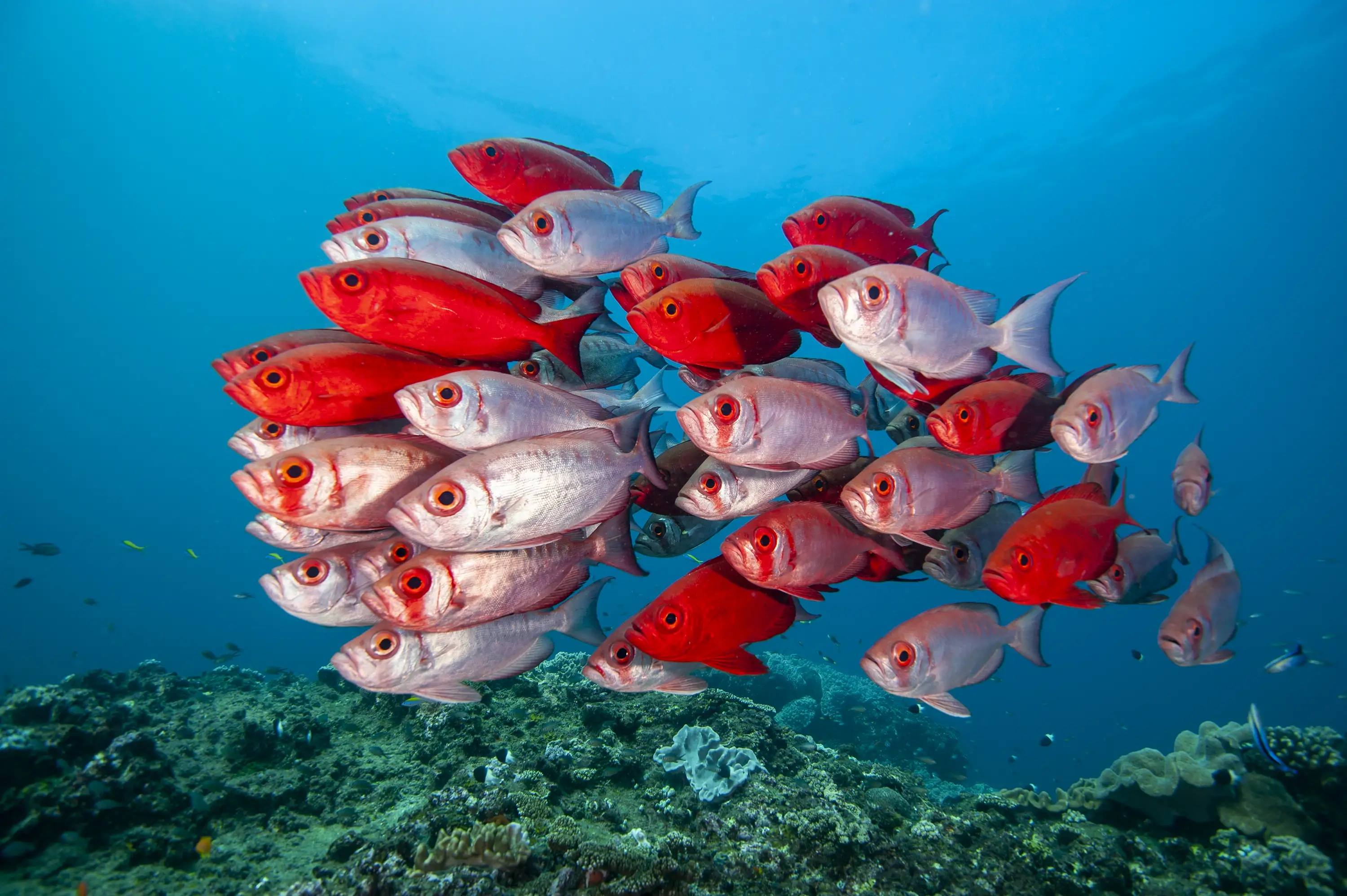
3. Schools of fish
For many reasons, schools of fish belong to my favourite underwater photography motifs. The fish together form an organised unit, a constantly shape-changing, pulsing creature, which behaves differently from the behaviour of each individual. It provides photographer with endless number of shapes and faces. The interaction between the photographer and big number of animals is somewhat unique. Finally, the colouring of the fish often display pleasing contrast to the blue water. The vibrant yellow of sweetlips or saturated red of big-eye snappers provide for perfect complement colouring to shades of blues.
...
Read full article